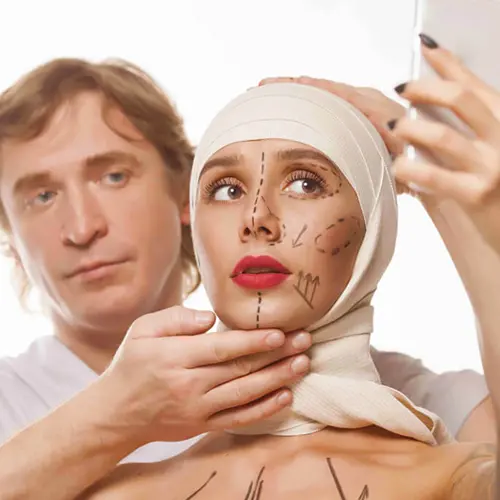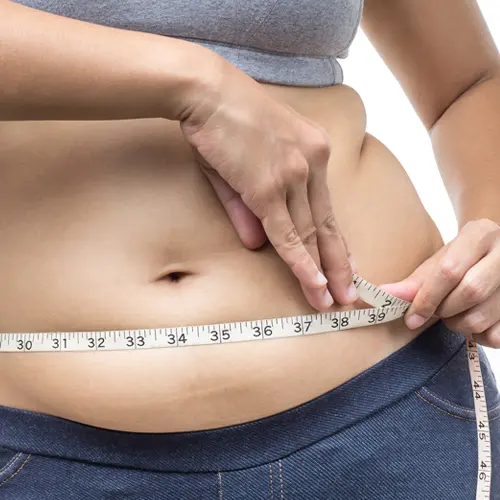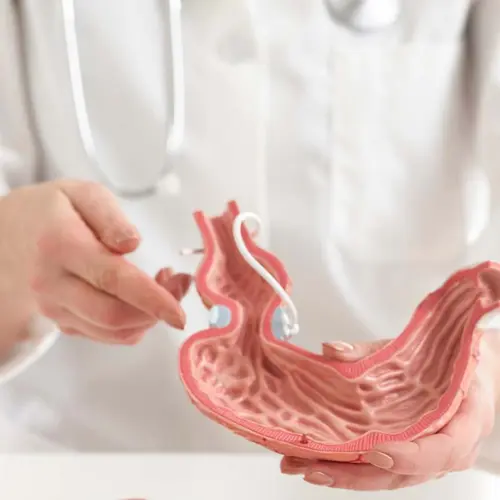Table of Contents
Can Rhinoplasty Affect Your Smile? Rhinoplasty, a surgical procedure aimed at enhancing the appearance and function of the nose, is a topic of interest for individuals considering cosmetic changes. While rhinoplasty primarily focuses on reshaping the nose, it is natural for candidates to wonder about its potential effects on other facial features, particularly the smile.
This article explores the relationship between rhinoplasty and one's smile, addressing common concerns and providing insights into what patients can expect.
The nose and the smile are integral components of one's facial harmony, and any alteration to the nose may raise questions about its impact on the overall facial expression. When performed by a skilled surgeon, rhinoplasty focuses on refining the nose's shape, size, or function with minimal direct influence on the smile.
However, specific considerations, such as nasal tip changes or how the nose interacts with surrounding structures, may indirectly affect the smile's appearance. This article aims to demystify these aspects of rhinoplasty, offering a comprehensive perspective to help individuals make informed decisions about their cosmetic goals.
What is rhinoplasty, and how is it performed?
Rhinoplasty, commonly referred to as a nose job, is a surgical procedure that alters the shape of the nose. It's one of the most common types of plastic surgery and can be performed for cosmetic reasons or medical purposes, such as to correct breathing difficulties. The specific techniques used in rhinoplasty vary depending on the desired outcome, but generally, the procedure involves the following steps:
- Anesthesia: The first step in a rhinoplasty procedure is administering anesthesia. This could be general anesthesia (where the patient is completely asleep) or local anesthesia with sedation.
- Incisions: The surgeon makes incisions to access the bones and cartilage that support the nose. These incisions are usually made inside the nose, so they are not visible after the surgery. In some cases, an "open" procedure may be used where an incision is made across the columella, the narrow strip of tissue that separates the nostrils.
- Reshaping the Nose Structure: The nasal structure is reshaped depending on the desired results. This could involve removing bone or cartilage in cases where the nose is being reduced or using cartilage grafts (taken from another part of the body or synthetic filler) to add volume.
- Correcting a Deviated Septum: If the septum (the wall between the nostrils) is deviated, the surgeon can straighten it to improve breathing.
- Closing the Incisions: After reshaping the nose, the surgeon re-drapes the skin and tissue over the new framework and closes the incisions.
- Recovery: After the surgery, the patient will need time to heal. Splints and internal tubes are often placed inside the nose to support the new shape as it heals.
The specific methods used and the complexity of the procedure can vary greatly depending on what changes are being made to the nose, as well as the patient's anatomy and desired outcomes. It's a highly individualized procedure and requires a detailed consultation with a qualified plastic surgeon to determine the best approach.
Can rhinoplasty affect your smile, and if so, how?
Yes, rhinoplasty can affect your smile, particularly in the short term during recovery. This influence is primarily due to the following reasons:
- Swelling: Post-surgical swelling is a typical body response to any invasive procedure. In the case of rhinoplasty, the swelling can affect the upper lip and the area around the nose, leading to a temporary change in the way you smile.
- Altered Muscle Dynamics: The surgery might involve alterations to the base of the nose and the upper lip, areas that are closely linked to the muscles responsible for smiling. These changes can temporarily impact the movement and flexibility of these muscles.
- Nasal Tip Elevation: Some rhinoplasty procedures involve lifting or reshaping the nasal tip. This can temporarily stretch or alter the muscles and skin between the nose and the upper lip, affecting the smile.
- Sensitivity and Discomfort: Post-operative pain, discomfort, or increased sensitivity in the nasal area might cause a person to consciously or unconsciously alter their facial expressions, including their smile.
It's important to note that these changes are usually temporary. As the swelling subsides and the area heals, the smile returns to its natural state. However, the duration of these changes can vary among individuals based on the extent of the surgery, individual healing processes, and other factors. Patients gradually return to their usual smile within weeks to months after the surgery.
Patients considering rhinoplasty should discuss these potential temporary changes with their surgeon to clearly understand the recovery process and the overall impact of the surgery on their facial expressions.
How long does it take for a smile to return to normal after rhinoplasty?
The time it takes for a smile to return to normal after rhinoplasty varies among individuals, depending on several factors, such as the extent of the surgery, the individual's healing process, and the specific techniques used. However, general timelines can be outlined:
- Initial Recovery Phase: In the first few weeks following rhinoplasty, patients often experience swelling and stiffness around the nose and upper lip area. This can lead to a feeling of tightness when smiling.
- Gradual Improvement: As the swelling decreases and healing progresses, the smile returns to its natural state. This improvement is typically noticeable within the first-month post-surgery.
- Longer-Term Healing: Complete healing can take several months as the internal structures of the nose and the surrounding tissues fully settle into their new shape. Most patients observe their smile returning to normal within 3 to 6 months after the surgery.
- Final Results: It's important to note that the final results of rhinoplasty, including the complete restoration of facial expressions like smiling, may take up to a year or even longer in some cases. This is due to the gradual resolution of internal swelling and the complete healing of the tissues.
Patients should closely follow their surgeon's post-operative care instructions to support a smooth recovery. Suppose there are concerns about changes in facial expressions or smiles post-rhinoplasty. In that case, discussing them with the surgeon is crucial, especially if these changes persist beyond the expected recovery period. Regular follow-up appointments are essential to monitor the healing process and address concerns.
Are there specific techniques during rhinoplasty to minimize the impact on the smile?
Yes, there are specific techniques that surgeons can employ during rhinoplasty to minimize the impact on the smile. These techniques reduce trauma to the muscles and structures surrounding the nose and lips. Some of these techniques include:
- Limited Dissection: By limiting the dissection or separation of skin and soft tissue from the underlying structures, surgeons can reduce the impact on the muscles used in smiling. This approach helps in preserving the natural dynamics of facial expressions.
- Precise Incision Placement: Strategic placement of incisions, especially in open rhinoplasty, can help minimize the impact on the upper lip's movement. For instance, placing incisions inside the nostrils (closed rhinoplasty) can reduce visible scarring and potentially impact the lip area.
- Gentle Handling of Nasal Base and Upper Lip: Surgeons take extra care when working near the base of the nose and the upper lip, as these areas are closely linked to the muscles responsible for smiling. Gentle manipulation and avoiding over-tightening tissues in these areas can help preserve natural facial expressions.
- Conservative Changes to Nasal Tip: Alterations to the nasal tip need to be done conservatively to avoid excessive pulling or alteration of the muscles and skin between the nose and the upper lip.
- Preservation of Nerve Integrity: Careful preservation of the nerves around the nose during surgery is crucial. Damage to these nerves can affect facial expressions, so surgeons aim to avoid any unnecessary trauma to these areas.
- Customizing the Surgical Approach: Every patient's facial anatomy is unique, and customizing the surgical approach to suit the individual's specific needs and facial structure is essential. This includes considering the patient's baseline facial expressions and smile before planning the procedure.
- Postoperative Care and Guidance: Providing patients with comprehensive postoperative care instructions and possibly recommending exercises or therapies to maintain facial muscle tone and flexibility can also help minimize the impact of the smile.
Patients need to discuss these techniques with their surgeon and how they will be applied in their specific case. Understanding the surgeon's approach and expertise in handling such nuances can provide reassurance and set realistic expectations for the postoperative recovery phase.
What should patients expect during the recovery period regarding changes in their smile?
Patients can expect temporary changes in their smile during the recovery period after rhinoplasty. These changes are usually a result of the surgery and the healing process. Here's what patients might typically experience:
- Stiffness and Tightness: In the initial weeks following the surgery, patients often report stiffness and tightness in the area around the upper lip and the base of the nose. This can make smiling feel different or less natural than usual.
- Swelling: Swelling is a normal part of the healing process and can affect the nose, upper lip, and cheeks. This swelling can alter the smile’s appearance, making it seem less expressive or more strained.
- Numbness: Some patients may experience temporary numbness or a reduced sensation in the nose and upper lip area. This can affect the control over smiling and other facial expressions.
- Asymmetry: Due to uneven swelling or healing, the smile might have temporary asymmetry. This usually resolves as the swelling subsides and the tissues heal evenly.
- Limited Range of Motion: There might be a temporary limitation in the range of motion of the upper lip, making it challenging to smile broadly or show teeth.
- Sensitivity: The surgical area may be sensitive, making patients cautious or subconsciously altering their facial expressions, including smiling, to avoid discomfort.
- Adjustment Period: Patients may also need time to adjust to the changes in their nose's appearance, which can temporarily affect how they express themselves, including smiling.
Patients need to remember that these changes are generally temporary. As the healing progresses, the smile typically returns to its pre-surgery state or close to it. The time frame for this can vary, with most seeing improvements within weeks to a few months. Complete healing can take up to a year or longer.
Patients are encouraged to follow their surgeon's post-operative instructions carefully to support the healing process and discuss any concerns about changes in their smile or other facial expressions during follow-up visits. Regular monitoring and communication with the surgeon can help address any issues that arise during the recovery period.
Can exercises or therapies help restore a natural smile after rhinoplasty?
Specific exercises or therapies can help restore a natural smile after rhinoplasty. These methods are designed to improve flexibility, reduce stiffness, and encourage proper healing in the areas around the nose and upper lip. However, it's crucial to consult with the surgeon before starting any exercises or therapies, as they should be appropriate for the stage of recovery. Here are some common approaches:
- Facial Exercises: Gentle facial exercises can help regain muscle flexibility and facial movement. These exercises might involve smiling, lips puckering, and other facial movements. They should be done gently and without strain.
- Massage Therapy: Soft massage around the nose and upper lip area can help reduce swelling and improve blood circulation, aiding healing and restoring natural movement. Again, this should be done gently and only after the surgeon approves it.
- Physical Therapy: In some cases, a physical therapist specializing in facial movements can guide patients through exercises and therapies designed to restore normal function and aesthetics to the face.
- Cold and Warm Compresses: Using cold compresses in the initial days post-surgery can help reduce swelling. Later on, warm compresses might be used to improve blood flow and tissue flexibility.
- Guided Relaxation and Visualization: Techniques like guided relaxation and visualization can help reduce stress and tension in the facial muscles, which can be beneficial for regaining a natural smile.
- Breathing Exercises: Deep breathing exercises can also be beneficial for overall relaxation and reducing tension in the facial muscles.
- Consistent Follow-Up Care: Regular follow-up visits with the surgeon are necessary to monitor the healing process and to get personalized advice on exercises and therapies.
Patients need to remember that recovery from rhinoplasty is a gradual process, and improvements in facial expressions, including the smile, will also be incremental. Patient adherence to the surgeon's instructions is key to a successful recovery. If there are persistent issues with facial expressions post-rhinoplasty, patients should discuss them with their surgeon for further evaluation and guidance.
FAQ
What is rhinoplasty, and how is it performed?
Rhinoplasty, commonly known as a nose job, is a surgical procedure that alters the shape of the nose for either cosmetic or medical reasons. It involves reshaping the nasal structure, including bone, cartilage, and skin, to achieve the desired appearance or to improve breathing functionality.
Can rhinoplasty affect your smile, and if so, how?
Yes, rhinoplasty can temporarily affect your smile. This is primarily due to the swelling and changes in the structure of the nose and surrounding tissues, which can impact the movement of the upper lip and facial muscles. These effects are usually temporary and resolve as the healing process progresses.
How long does it take for a smile to return to normal after rhinoplasty?
The recovery time can vary, but typically, patients notice their smile returning to normal within a few weeks to a few months post-surgery. As swelling decreases and the tissues heal, the smile gradually regains its natural movement and appearance.
Are there specific techniques during rhinoplasty to minimize the impact on the smile?
Yes, experienced surgeons use precise techniques to minimize the impact on the smile. These include careful handling of the muscles and tissues around the nose and tailoring the procedure to the individual's facial structure to ensure a natural-looking outcome.
What should patients expect during the recovery period regarding changes in their smile?
During recovery, patients might experience stiff upper lip and tightness when smiling. This is a normal part of the healing process. Patients must carefully follow their surgeon's post-operative instructionsto support optimal healing.
Can exercises or therapies help restore a natural smile after rhinoplasty?
Some surgeons recommend gentle facial exercises or massage therapies to help restore movement and flexibility in the facial muscles. However, it's crucial to consult with the surgeon before starting any activities to ensure they are safe and appropriate for the stage of recovery.




















